Rhetoricon
Shipped · In-Person
Research Project
Roles
Full Stack Developer
Research Assistant
Timeline
8 months
Sep 2024 – Apr 2025
Tools
Figma
Deliverables
2 webpages
240+ annotated rhetorical instances
Role
Full Stack Developer
Research Assistant
Timeline
8 months
Sep 2024 – Apr 2025
Tools
Figma
OutPut
2 webpages
240+ annotated rhetorical instances
Executive Summary
During my eight months with Rhetoricon, I designed the early-stage interface and visual identity for two key components, the project’s main landing page and RhetWiki, while contributing to the research effort by annotating over 240 rhetorical instances.
The challenge was to translate intricate linguistic data into intuitive structures while accommodating multiple user groups: researchers, educators, and casual learners. Through iterative prototyping and close collaboration with the research and development teams, I established a clear visual hierarchy, content flow, and typographic system that now supports Rhetoricon’s ongoing development.
My work helped position Rhetoricon as both a rigorous academic resource and an accessible digital platform, ready to evolve into its next phase as an interactive linguistic game to grow our understanding of language collectively.
Takeaways
This project deepened my ability to design for research-heavy content and multifaceted audiences. It challenged me to distill complex linguistic concepts into clear, navigable structures while maintaining academic credibility.
Key learnings:
- Designing for academia requires balancing depth with accessibility.
- Effective visual hierarchy is critical when dealing with layered, variable data.
- Early missteps in tone can be valuable if used to align a team’s vision.
- Collaborative iteration helps turn abstract research into tangible design outcomes.
Rhetoricon remains a milestone project for me because it merged my interest in linguistics, systems thinking, and human-centered design: a rare intersection that challenged me to turn complexity into clarity, while working in-person with a large team for the first time.
Overview
Rhetoricon is an evolving research project exploring how rhetorical figures shape communication, cognition, and linguistic expression. The initiative combines a vast database of annotated texts with an interactive gaming platform designed to make rhetorical structures accessible to both researchers and the public.
I joined during a pre-launch phase to design the foundation for Rhetoricon’s website and RhetWiki, creating a system that communicates complex linguistic theory through approachable design. My role bridged research and UX, translating academic data into a visual experience that invites exploration, learning, and participation.
Problem
Rhetoricon’s vast database and complex linguistic framework made it challenging to communicate its purpose and content in a way that non-specialists could easily grasp.
The project needed:
- A landing page that clearly introduced the project’s purpose and invited participation in the game, GoFigure.
- A wiki system (RhetWiki) that allowed users to explore rhetorical figures through a navigable, well-structured hierarchy of information.
- A consistent visual identity and typographical system that unified academic precision with accessibility.
Research Foundation
As part of the research team, I engaged deeply with the linguistic data to understand how users, both academic and casual, might interact with it. I:
- Annotated over 240 rhetorical instances, reviewing and cross-referencing figures, such as epiphora, to ensure consistency and accuracy.
- Collaborated with the data & content team to understand the nomenclature system and familiarizing myself with over 60 figures, such as parison and isocolon, using the figure guide the team developed to help users play the game similarly.
- Observed how complex annotation data was stored and accessed, helping shape the content hierarchy for the wiki design.
This dual role as designer and researcher gave me a unique lens into how design could make research more engaging and approachable.
Ideation
1. Understanding the audience
Rhetoricon’s audience spanned multiple levels of linguistic engagement, from researchers to curious learners. Designing for this spectrum required balancing scholarly precision with public accessibility.
- Researchers and computational linguists sought direct interaction with the Rhetoricon database by requesting admin access or contributing to ongoing research.
- Educators and graduate students needed reliable reference material for teaching and learning rhetorical figures.
- The interested general public needed an entry point into linguistics through GoFigure, the interactive game that bridges entertainment and research.
2. Designing the Rhetoricon landing page
The landing page served as the main entry point. My focus was to:
- Establish brand color direction and visual identity, exploring multiple palette iterations before finalizing a system that felt both academic and modern.
- Structure content flow to highlight the purpose, process, and participation model of Rhetoricon.
- Introduce call-to-action sections inviting visitors to play GoFigure or explore the database.
Through several revisions, I refined visual hierarchy, improved scannability, and ensured linguistic complexity was presented through accessible, story-driven design.
3. Designing the RhetWiki
The RhetWiki was conceived as a navigable glossary of rhetorical figures.
Key focuses:
- Developed typographical hierarchy and layout system across three revision cycles.
- Created a balance between readability and data density, using clean typography and intuitive spacing to reduce cognitive load.
4. Iteration & Collaboration
Working alongside the research and development teams, I presented iterative Figma prototypes for feedback. Collaboration centered on aligning design decisions with linguistic accuracy.
Design Process
Iteration 1 – Establishing a starting point
My initial design was not at all what the team wanted.
At the outset, the team had a clear understanding of the project’s functionality but no visual direction. My first iteration reflected how I envisioned the site: bold, dynamic, and game-like.
While the team found this version too playful, it became a valuable reference for defining what the site should not be. Their feedback clarified that the design should:
- Feel professional and sleek, not whimsical.
- Be public-oriented but grounded in research.
- Shift focus away from the game toward the project’s academic foundation.
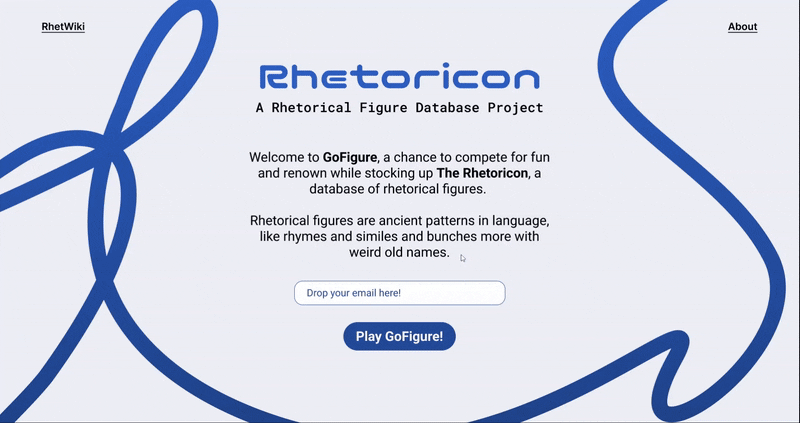
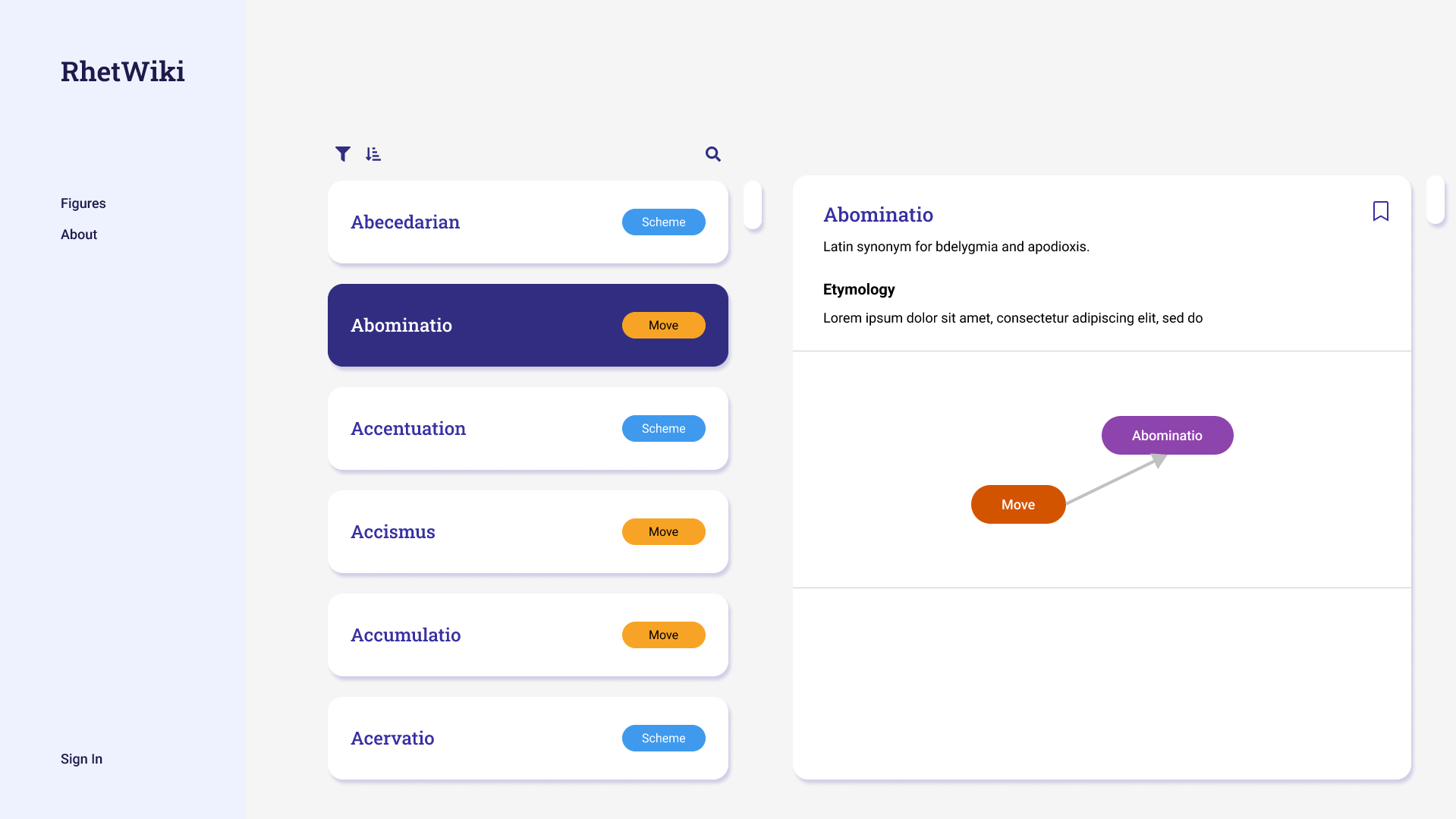
Interestingly, the RhetWiki received positive feedback for its clarity and structure, even though I initially treated it as a separate platform. This early confusion helped me understand the ecosystem of Rhetoricon more deeply as a fresh recruit.
Iteration 2 – Refining Direction
RhetWiki 2 : 0 Main Page
The second round brought better structural clarity but still lacked narrative coherence. I explored multiple layout variations for the main page, incorporating the feedback from our research lead to better express the project’s purpose.
At this stage, I began to realize the importance of content flow and typographic hierarchy over motion or visual effects. The wiki continued to evolve through small adjustments in hierarchy, labeling, and link behavior, bringing it closer to a usable reference system.
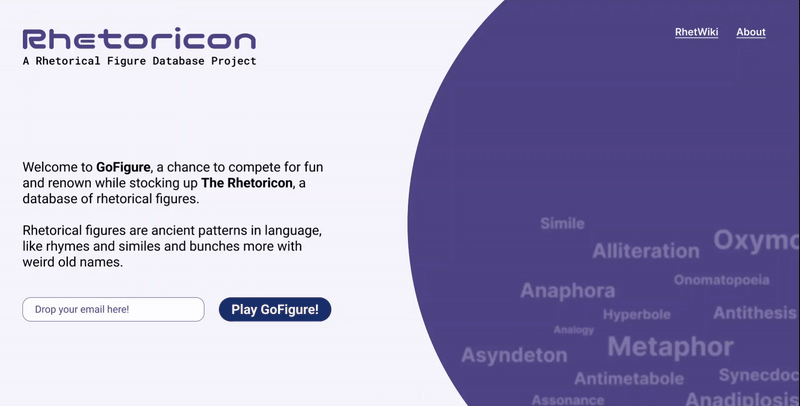
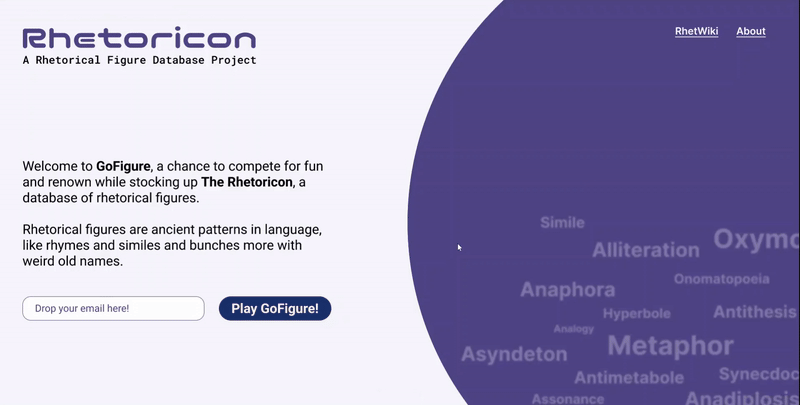
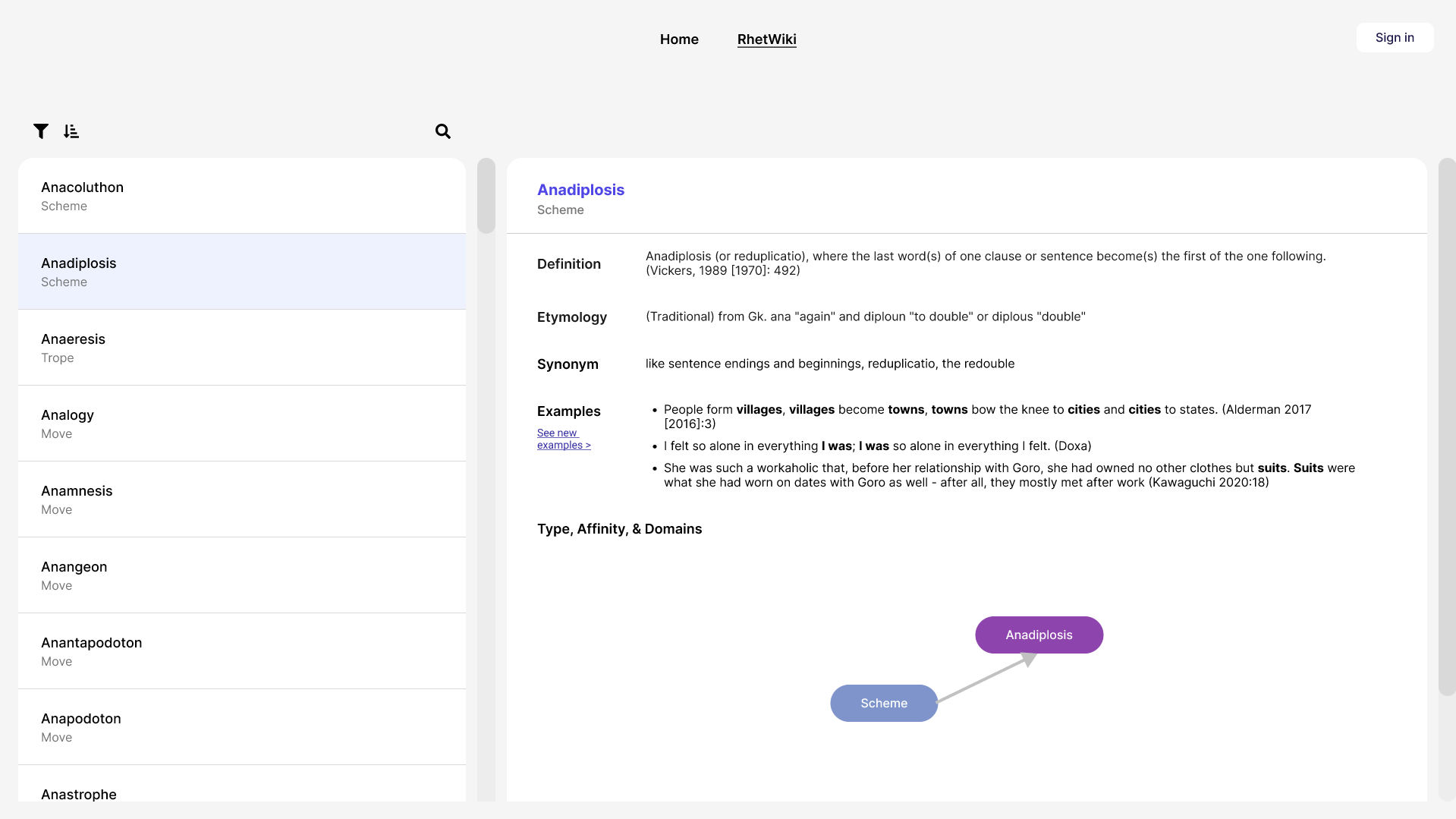
Iteration 3 – Achieving Cohesion
The landing page is finally taking form
By the third iteration, the main page finally began to take form. I used the wiki’s organizational structure as a reference to guide the hierarchy and pacing of the landing page. The biggest challenge became content definition: figuring out what sections the site actually needed and drafting placeholder copy to demonstrate their purpose.
This version marked the turning point where the site started to feel cohesive and aligned with the project’s broader research narrative.
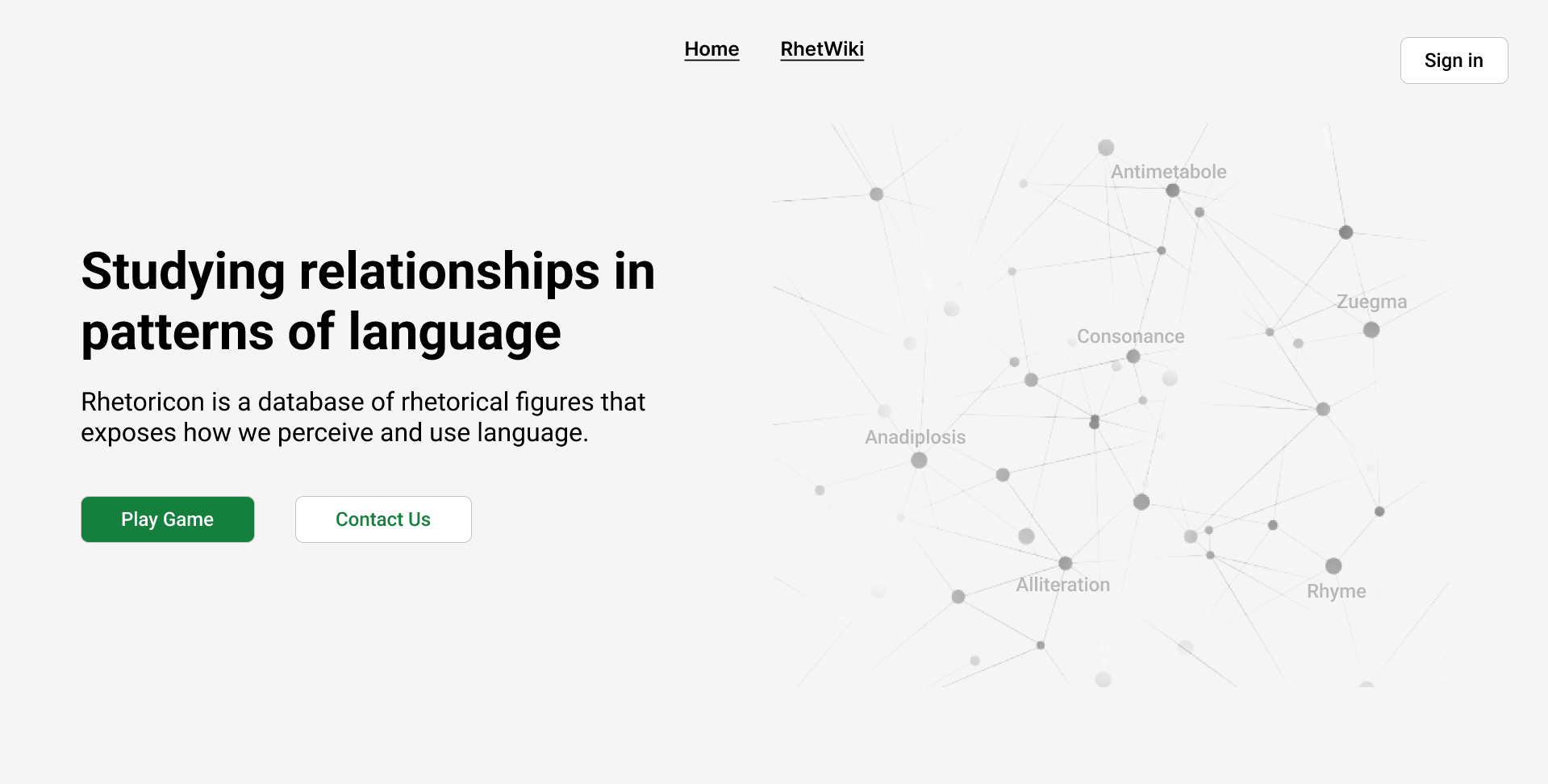
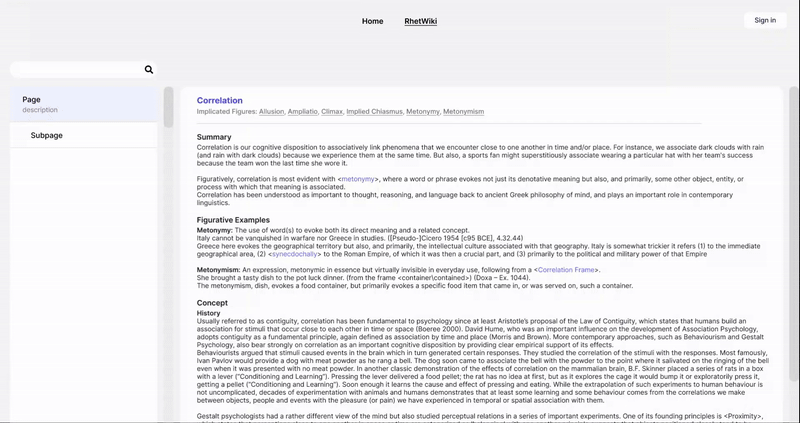
Iteration 4 – Finalizing Structure and Identity
The main page’s layout was approved, but brand colors took some more time
The final iteration solidified the layout and information flow, and the design was approved for development. The main unresolved decision was the brand color and visual identity, which underwent several revisions before being finalized.
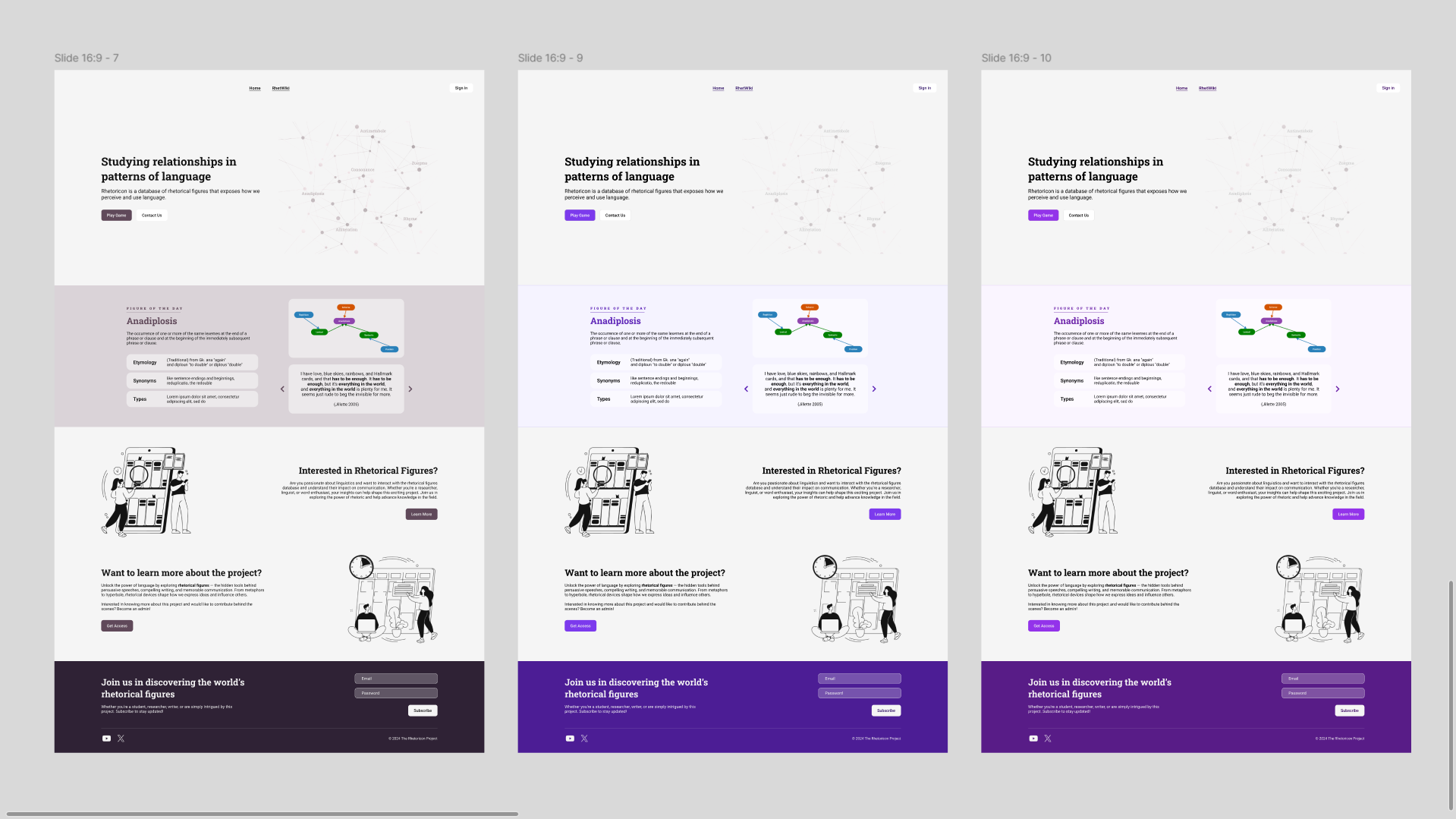
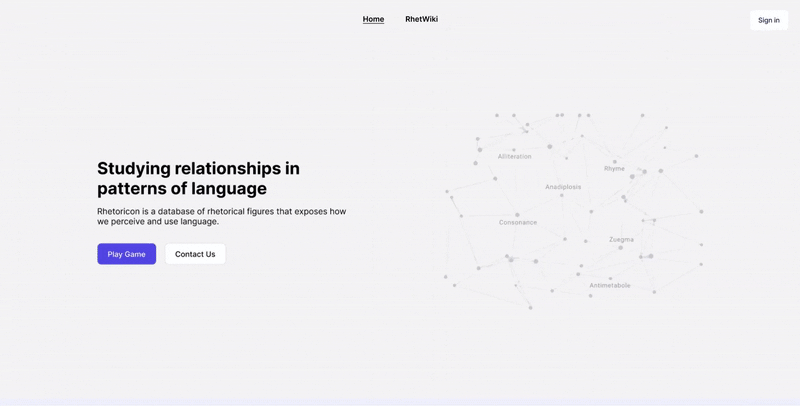
Final Developed Pages
While my tenure ended before development concluded, the prototypes I created served as the blueprint for ongoing development.
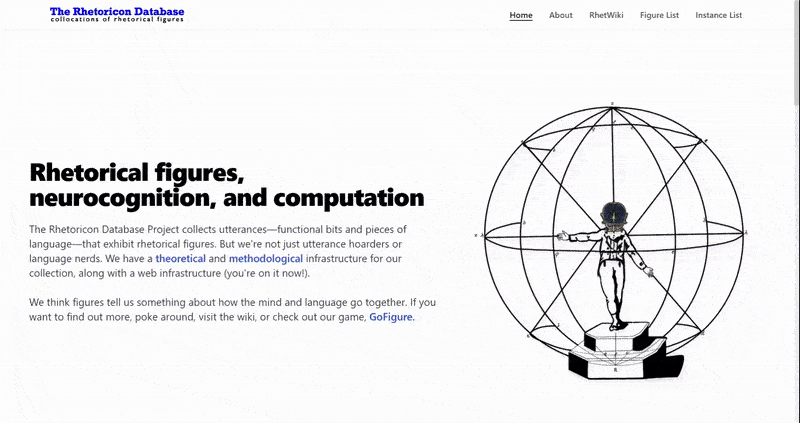
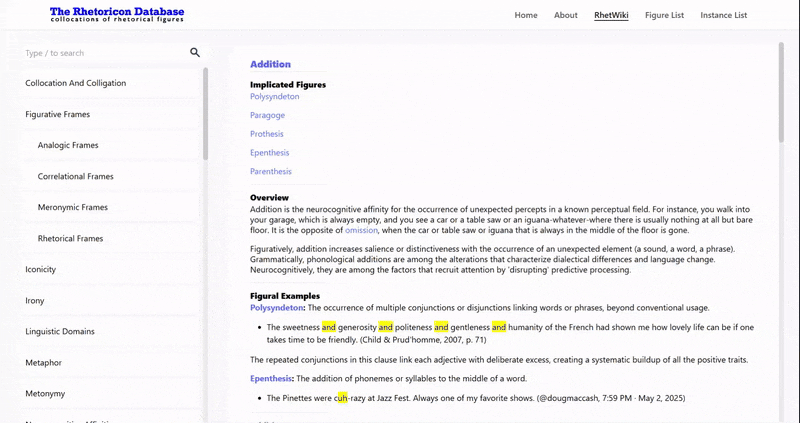
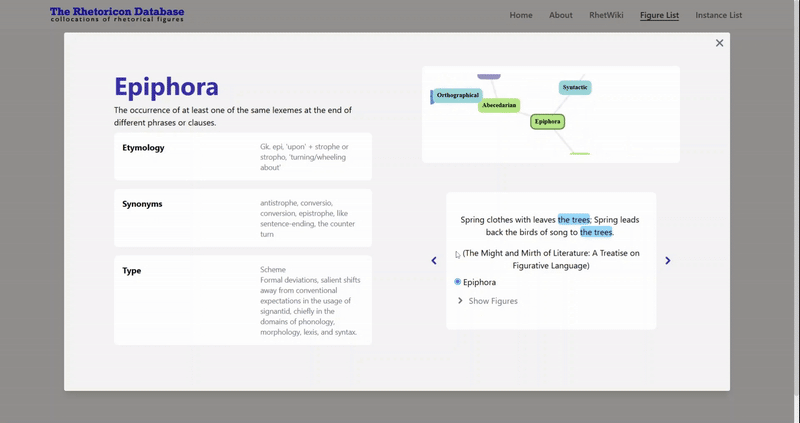
The “Figure of the Day” display component I designed was later integrated into both the RhetWiki and Figure List to present rhetorical figures.
Outcome
- 240+ linguistic instances annotated, primarily focused on epiphora but spanning almost 60 rhetorical figures in total.
- 2 major prototypes were delivered and development began immediately.
- 4 design iterations completed refining hierarchy, content clarity, and accessibility.
- WCAG-compliant visual system established for readability and contrast.
- Information architecture framework used by future developers to structure ongoing releases.
These outcomes contributed directly to Rhetoricon’s transition from a research-only database to a public-facing digital platform that invites engagement from researchers, educators, and the general public.